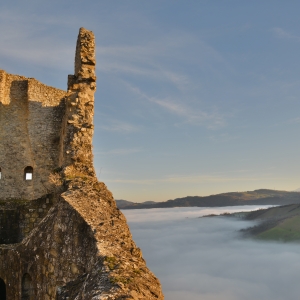Castello di Canossa
The remains of the Castle of Canossa rise in the Reggio Emilia Apennines above a white sandstone cliff: they are reduced to a limited portion of the once fortified area due to the crumbling of the land. Canossa's fame is linked to the Attonidi family and the historic meeting that took place on 27 January 1077, when Pope Gregory VII absolved Emperor Henry IV from excommunication in the presence of Countess Matilda and Abbot Hugh of Cluny. The castle has been destroyed and rebuilt several times over the centuries, but archaeological investigations have once again brought to light numerous ancient elements. The surrounding landscape features and historical memories make it an extraordinarily evocative place. The castle was built around 940 by the Longobard Azzo Adalberto and became the centre of a complex defence system to control the Apennine valleys and plains. In 950, Adelaide, widow of Lothair I, King of Italy, found refuge there.
In 1878, acquired by the Italian government, it was declared a National Monument. On the site is the Naborre Campanini Museum, which houses exhibits from the castle excavations carried out in 1877 and 1893. The exhibits in the museum cover several themes: from the figure of Matilda and her era, to the history of the archaeological excavations, to the nature trail.


